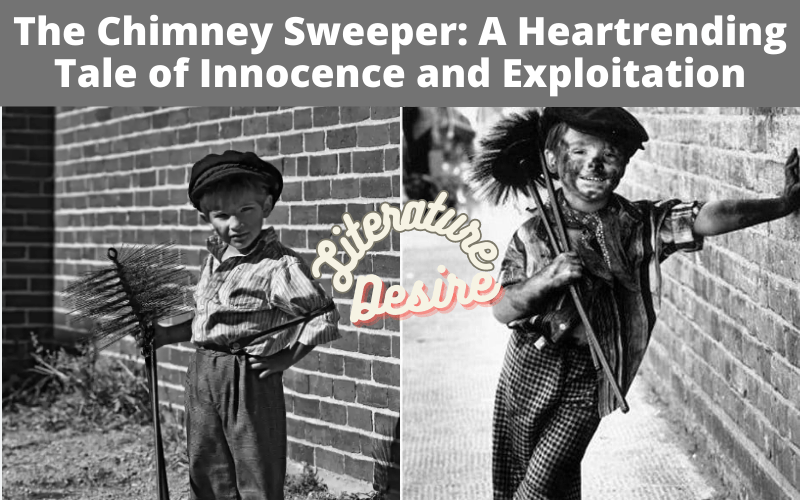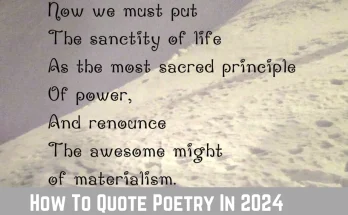Dive into the poignant world of “The Chimney Sweeper” with this comprehensive summary. Uncover the themes, characters, and social commentary within William Blake’s masterpiece. Infant Sorrow by William Blake is also an amazing poem.
“The Chimney Sweeper” is a compelling poem by William Blake, which sheds light on the hardships faced by child chimney sweeps during the 18th and 19th centuries. Through vivid imagery and a poignant narrative, Blake explores the themes of innocence, exploitation, and societal oppression.
In this article, we delve into the chimney sweeper summary, dissecting its layers of meaning and offering insights into its historical context. Let us embark on a journey through the trials and tribulations faced by these young chimney sweeps.
The Chimney Sweeper Summary: A Heartrending Tale of Innocence and Exploitation
The chimney sweeper summary provides an overview of the poem’s narrative, encapsulating the essence of Blake’s powerful message.
Amidst the soot-stained chimneys of London, a young boy, Tom, narrates his heart-rending tale. Having lost his mother at an early age, Tom finds himself at the mercy of a society that exploits and robs him of his innocence.
Sold by his father, Tom is thrust into a world of labor and despair, where his days are spent climbing treacherous chimneys, his body bearing the scars of this cruel trade.
Despite his sorrowful existence, Tom maintains a glimmer of hope, driven by his belief in a better afterlife. In a dream, he encounters an angel who assures him that his suffering will be rewarded in heaven.
The poem concludes with a plea to society to end the exploitation of innocent children and recognize their inherent worth.
The Historical Context of “The Chimney Sweeper”
Understanding the historical backdrop against which “The Chimney Sweeper” unfolds provides valuable context for interpreting Blake’s message.
The Plight of Chimney Sweeps in the 18th Century:
The Industrial Revolution’s rapid urbanization created a demand for chimney sweeps, typically young children, due to their small size and ability to navigate narrow flues.
Children as young as four or five were subjected to hazardous working conditions, enduring physical abuse, respiratory ailments, and a high risk of chimney fires.
The Influence of Religion:
Blake employs religious imagery throughout the poem to emphasize the innocence and divine nature of the chimney sweepers, juxtaposing their exploitation with the notion of spiritual salvation.
Conclusion: The Chimney Sweeper Summary
“The Chimney Sweeper” remains a poignant reflection on the exploitation of innocence, shining a light on the hardships faced by child chimney sweeps in 18th-century London.
Through his evocative language and vivid imagery, Blake implores society to confront and rectify the injustices perpetrated against these vulnerable individuals. The poem continues to resonate, reminding us of the enduring power of compassion and the need for social change.
Frequently Asked Questions
Blake’s inspiration stemmed from his own observations of child labor and the plight of chimney sweeps in London. His empathy for these oppressed children drove him to shed light on their suffering.
Blake employs the imagery of white hair, representing the soot covering the children, and their angelic voices to symbolize their innate innocence despite their dire circumstances.
Tom’s dream provides solace and hope amidst his bleak reality. The angel’s promise of redemption and a better afterlife reinforces the idea that the chimney sweepers’ suffering will be acknowledged and rewarded.
Yes, Blake uses the chimney sweeper’s story as a vehicle for criticizing the societal structures that perpetuated child labor and exploitation. The poem advocates for social reform and compassion towards the marginalized.
This poem echoes Blake’s recurring themes of innocence, experience, social injustice, and the struggle against oppressive systems. It aligns with his overall vision of a harmonious and equitable society.
While the poem itself did not immediately lead to tangible change, it contributed to the growing awareness of the harsh realities faced by child chimney sweeps. Over time, public sentiment shifted, and reforms were eventually implemented to address child labor concerns.



